Patria y Vida: Understanding Cuba’s Historic 2021 Protests
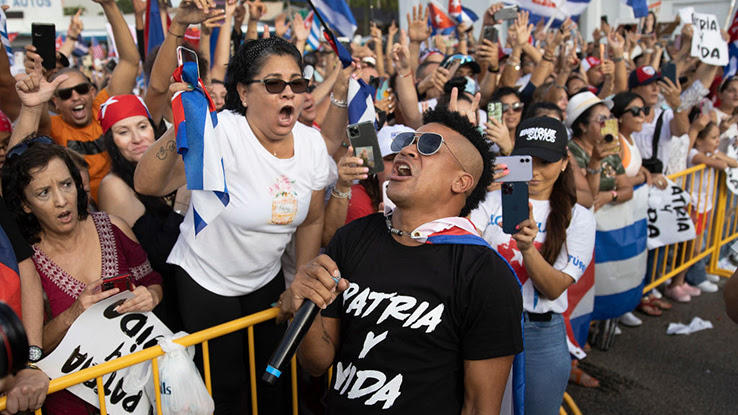
In mid-July of 2021, massive and historic protests erupted across Cuba in response to Cuban citizens’ strong dissatisfaction with the government’s handling of everything from basic food and medicine needs to the COVID-19 pandemic. The country’s authoritarian socialist regime leaders tried to crack down on the dissent but were confronted with equal pushback from the people, centering the world’s eyes on the tiny island state, waiting for resolution after nearly 60 years of the Castro dictatorship.
To understand how Cuba reached this breaking point, it’s important to review the rise of Fidel Castro and his communist rule. Here’s a basic rundown of what’s going on — and why.
Cuban History Is Rife With Colonization and Revolution
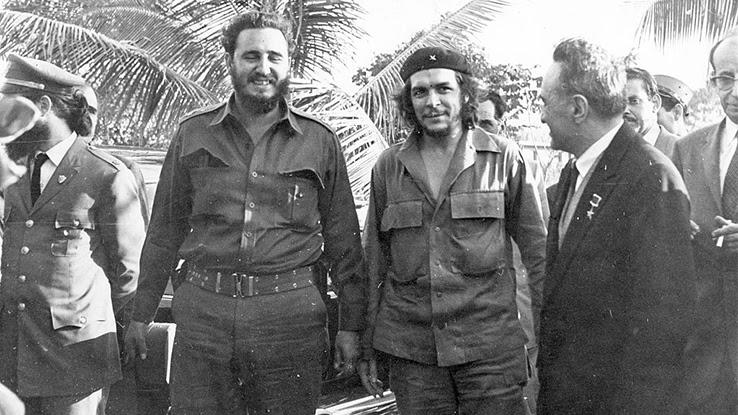
Throughout history, Cuba has been subjected to intervention and subjugation by other countries numerous times. Following Christopher Columbus’ invasion of the island, Spain controlled Cuba. This lasted until the mid-1700s, when Great Britain briefly took over before returning control of the island to Spain in exchange for what’s today called Florida. Rebellions cropped up around the island but failed to drive away the Spaniards, who didn’t withdraw until the Spanish-American War took place in 1898. Cuba gained formal independence in 1902 and became the Republic of Cuba.
Over the next several decades, the Cuban republic experienced intense economic growth — but it also saw its political leaders grow increasingly corrupt. Between 1953 and 1959, the 26th of July Movement — led by Fidel Castro, Che Guevara and Raúl Castro — spurred on a number of armed conflicts that eventually saw Movement revolutionaries overthrow Cuba’s president, Fulgencio Batista. This event, known as the Cuban Revolution, facilitated Castro’s rise to power as Cuba’s leader. Castro implemented a sweeping plan that included reforms for public works, literacy, agriculture and industrialization. Aided by the Soviet Union, the new government began to fully embrace Soviet-style communism in the mid 1960s.
Post-Revolution, Communism Takes Hold of Cuba
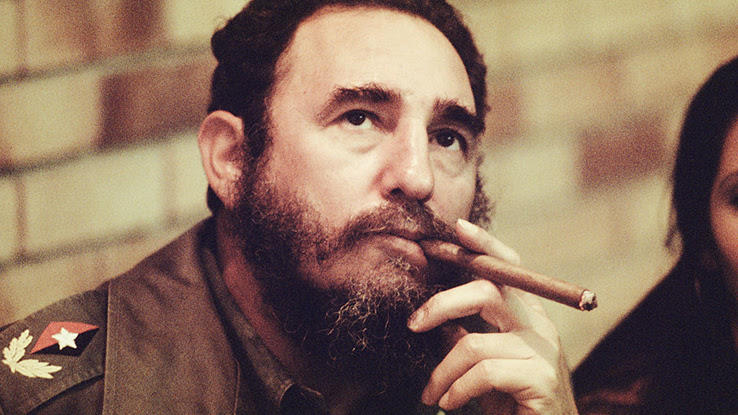
Initially, the United States recognized Fidel Castro as Cuba’s new leader following the revolution, although the new government encountered small opposition from Batista loyalists. A purge quickly identified the opposition, and Castro demanded loyalty from anyone hoping for a political post. Soon after, opposition newspapers, radio and television stations, labor unions, teachers and professors sympathetic to the counter-revolution were purged, and all forms of dissent were outlawed. Meanwhile, U.S. President Eisenhower and Congress worked under the assumption that Cuba would remain within the United States’ sphere of influence. But only six months later, the Eisenhower administration had begun plotting Castro’s replacement.
Relations between the United States and Cuba quickly deteriorated after Castro denied Royal Dutch Shell, Standard Oil and Texaco access to USSR petroleum in Cuban refineries. The Cuban government took control, which led to oil companies, Eisenhower and the U.S. government boycotting Cuba. The Caribbean nation wrangled control of companies from the United States as well as land from foreign holders, causing the U.S. to sever diplomatic relations with Cuba in 1961 and restrict trade a year later.
Cuba Becomes a Socialist Dictatorship
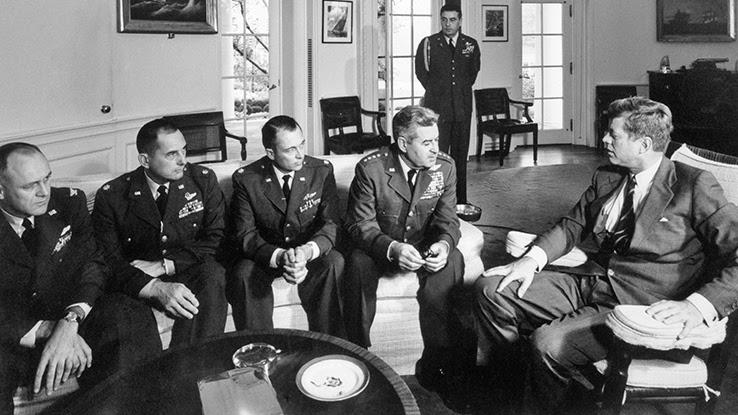
The Kennedy administration implemented a ban on Cuba, preventing citizens from traveling or conducting financial and commercial transactions. Conflict fomented between the two nations, and Castro’s ultimate goal was to unite Cuba without geopolitical influence from the United States. In 1962, Soviet leaders sent a barrage of surface-to-air missiles from the island in retaliation for the U.S.’s earlier deployment of missiles in Italy and Turkey. This Cold War-era conflict was known as the Cuban Missile Crisis, and it nearly devolved into a full-scale nuclear war.
Over the next decade, the standard of living in Cuba declined. Even after a new economic policy was implemented, unemployment was rampant. The new socialist system caused Cubans to flee the country by the hundreds of thousands. Between 1959 and 1993, more than 1.2 million Cubans emigrated to the United States.
Cuba Breaks From the World Stage
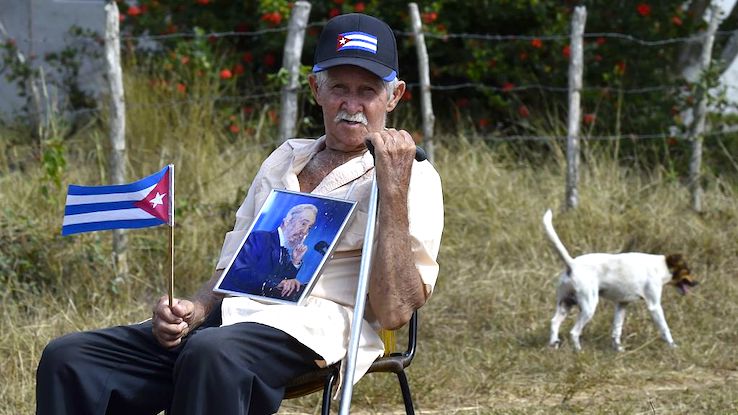
Castro spent much of his time attempting to spread revolutionary political principles across the globe. He openly supported the Sandinista insurgency in Nicaragua and various liberation movements throughout Angola, Equatorial Guinea, Ethiopia, Guinea-Bissau and Mozambique, with the backing of the Soviet Union. But by 1991, the USSR, which was Cuba’s primary trade partner, had dissolved, and Cuba’s economy effectively halted as a majority of its trade disappeared. Living conditions severely declined, and the United States tightened its embargo, hoping to squeeze Castro from power — an attempt that failed.
Censorship further isolated the island from the rest of the world. In 1997, Vladimiro Roca, a veteran of the war in Angola and son of the Cuban Communist Party’s founder, petitioned for democracy and human rights. He was imprisoned but subsequently released. Spurred by this event, activists continued working to change Cuba’s political process, even as socialism and censorship continued strengthening in an effort to eliminate political dissidents and independent journalists. In 2006, Castro fell ill, and his brother Raúl took over as Acting President before Fidel’s formal resignation in 2008.
“Patria y Vida” Takes the Nation by Storm as Demands for Reform Are Heard
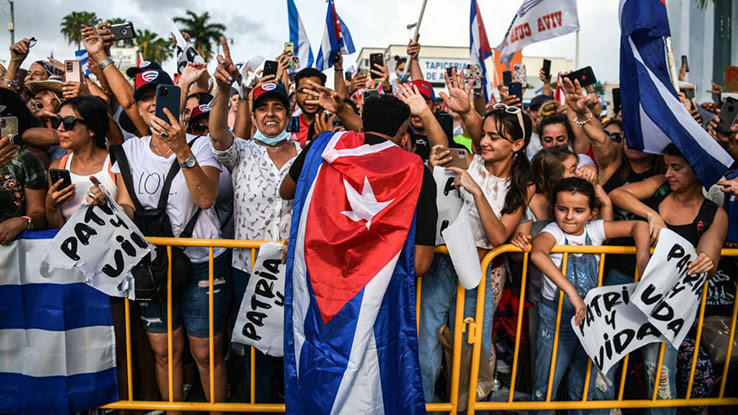
All of this history to say, Cuba has long been mired in geopolitical and internal situations that have resulted in turmoil and conflict. Its relationship with the world — and the Cuban government’s relationship with its people — are complicated, and tension has long been a hallmark of the country’s civic circumstances.
Winds of change have been blowing for some time, though; after the election of President Barack Obama, the relationship softened between the United States and Cuba. In 2012, it received its first shipment of American goods in half a century. Raúl Castro was re-elected in 2013, and President Obama established diplomatic relations with Cuba in 2015, eliminating it from the list of state sponsors of terrorism. But the plan for opening a U.S. Embassy in Havana halted with the then-incoming Trump administration.
Cuba remains one of the few official socialist countries in the world. Despite reforms, its citizens lack access to basic medical care and endure low living standards, and the COVID-19 pandemic pushed their discontent to the brink. Cuba’s economy has also reportedly declined 11% due to the pandemic alone.
Spontaneous protests erupted in July 2021 across 40 cities due to these compounding effects of the COVID-19 pandemic, governmental abuse, food shortages, lack of internet access and increasing wealth gaps. Thousands of people began “calling for an end to the 62-year-old communist regime,” and the protests eventually spread to more than 40 cities across the country — and to Miami, Florida, where more than 1 million people of Cuban heritage live. These massive protests led to a government crackdown and what The New York Times calls “bewildering” and “alarming” detentions of suspected protestors.
The intensity of the situation has been unlike anything Cubans have seen in years, and it’s impacting culture in lasting ways. Earlier in 2021, Cuban musicians Yotuel, Gente De Zona, Descemer Bueno, Maykel Osorbo and El Funky penned a song titled “Patria y Vida,” which translates to “homeland and life” and is an irreverent reversal of the Castro regime’s slogan “patria o muerte” (“homeland or death”). The song quickly became the protests’ anthem as participants demanded a better life in their homeland.
By August of 2021, the protests had calmed somewhat — although the sentiment of “Patria y Vida” remains. Change in Cuba won’t happen overnight. But the world is watching now, and global support for protestors may help accelerate the change they sparked.





